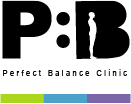If you have ever encountered an intense, piercing sensation that shoots from your lower back to your leg, you could be grappling with sciatica. This comprehensive guide aims to enhance your understanding of sciatic nerve pain and offer advice on effectively managing its symptoms at home, while also considering the recommendations of medical experts, when relevant.
Understanding Sciatica
Sciatica typically arises from pressure on the sciatic nerve in your lower back. Running from the lower back and branching through the hips, buttocks, and lower limbs, the sciatic nerve plays a crucial role. When this nerve pathway encounters obstructions like herniated discs, spinal stenosis, or injury, sciatica pain can ensue. This condition commonly afflicts individuals who frequently engage in bending, lifting, or are prone to lower back pain. It can manifest as either a brief acute episode or a persistent chronic condition.
Symptoms and Diagnosis
The main sign of sciatica is pain that begins in the back area and spreads down to your buttock and the back of a single leg. Furthermore, your leg could develop swelling, numbness, and weakening. You might also experience tingling or burning sensations. A comprehensive physical examination conducted by a healthcare provider is instrumental in diagnosing sciatica. Obtaining a precise diagnosis of your sciatic nerve pain is vital for achieving complete resolution of the condition.
Exercises for Reducing Sciatica Pain
Incorporating stretching and exercise into your routine is essential for effectively managing sciatica pain. These activities help to strengthen and enhance the flexibility of the gluteus, piriformis, and hamstring muscles in the lower back, leading to pain reduction and accelerated healing. The following exercises can be particularly beneficial:
- Knee to Chest Stretch: This assists with relieving the piriformis and gluteal muscles.
- Glute Bridges: This workout strengthens the muscles located in the gluteus and the lower back.
- Sitting Pigeon Pose: This stance helps ease sciatica pain by helping to expand the hips.
- Seated Trunk Stretch: This helps to open up the spine and relieve the pressure on the sciatic nerve.
- Child’s Pose: A mild stretch from yoga for the legs, hips, and back.
- Standing Hamstring Stretch: This can help relieve sciatica-related hamstring tightness and pain.
- Pelvic Tilts: This exercise strengthens the muscles in your lower back and the core, providing the spine additional support.
Treatment of Sciatica Pain
Besides workouts, other techniques can help treat sciatica pain. These include using over-the-counter painkillers, applying heat or ice, and maintaining a straight posture. In some situations, a doctor might advise surgery, prescription drugs, or physical therapy. It’s important to isolate the root cause of the issue sooner and not waste time with medication if it’s not going to help. Moving forward quickly with a plan of action can often make a big difference in getting results.
Conclusion
Though sciatica can be unpleasant and disruptive, it’s crucial to remember that the majority of patients recover with patience and conservative therapy. Regular exercise, excellent posture, and a healthy lifestyle can facilitate a faster recovery and a decreased chance of recurrence. Always seek medical assistance before starting a new workout program, especially if you have an issue like sciatica. Our aim is to provide great diagnosis, treatment, and exercises for clients to make a good recovery from acute and chronic forms of sciatic nerve pain, hopefully avoiding surgery or injections if we can get there quick enough.
We hope you’ve found this information useful to help understand your sciatic nerve pain and what we can do to help move this forward?
Here is a video created by our specialist on the subject. We have the team here to help you.
If this resonated with you then…
Take advantage of our ‘Sciatica Suppression’ sessions. Designed to give you the support you need with your condition and get you started on your road to recovery. Find very quick and effective results!
Our “Sciatic Suppression” sessions will provide you easy tips to follow when treating your condition and help you get out of pain quickly. It covers important areas that most practitioners seem to miss in normal sessions with their clients that we know will accelerate your recovery! Simply use the contact form below to provide us your details to get booked in.
You’ll get an accurate diagnosis, a clear action plan and steps towards resolving your elbow pain for good all in your first session! Simple.




